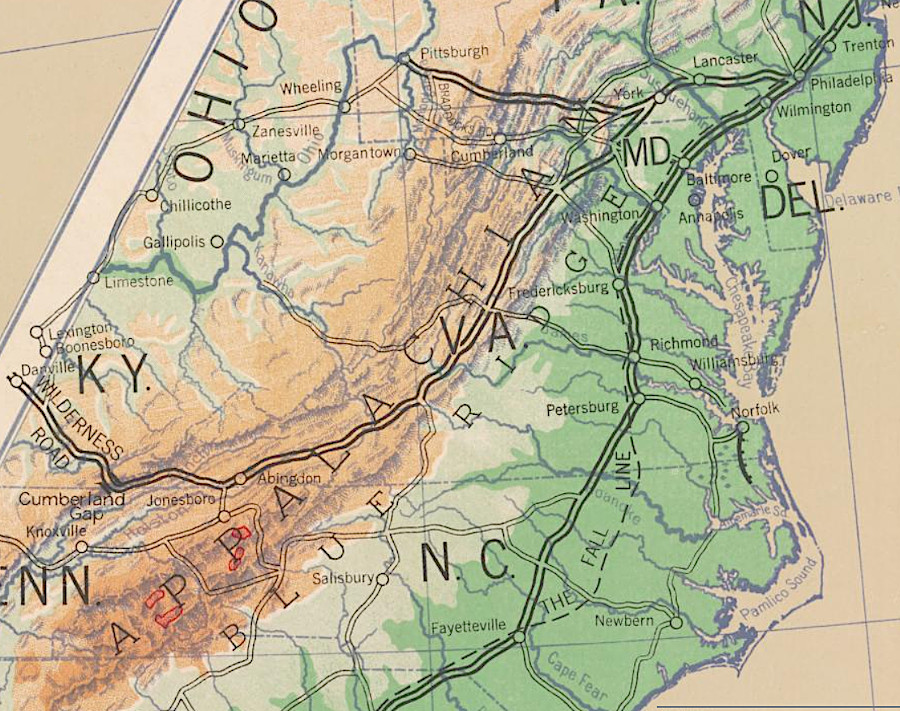
the Wilderness Road passed through Cumberland Gap into Kentucky
Source: Library of Congress, Westward movement (Hart-Bolton American history maps, 1917)

the Wilderness Road passed through Cumberland Gap into Kentucky
Source: Library of Congress, Westward movement (Hart-Bolton American history maps, 1917)
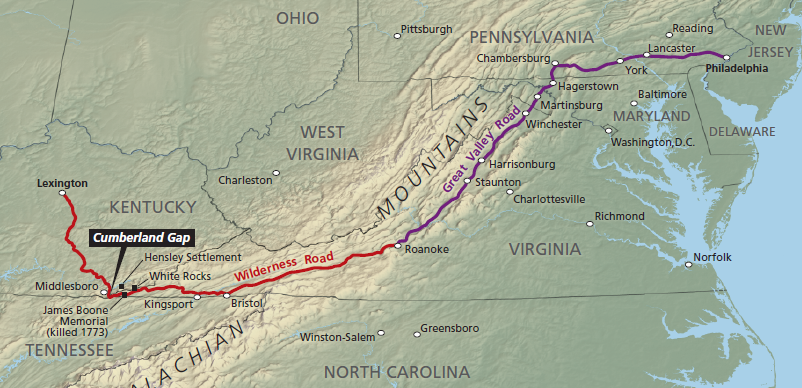
the Great Wagon Road/Philadelphia Road/Valley Road split at Roanoke Gap, where a branch led to North Carolina and the Wilderness Road led to Kentucky/Tennessee
Source: National Park Service, Cumberland Gap National Historical Park, Map showing the historic Wilderness Road

the Wilderness Road ran from Abingdon westward through Moccasin Gap in Clinch Mountain, then past the future site of Estillville (now Gate City) to Cumberland Gap
Source: Library of Congress, A map of the state of Virginia, constructed in conformity to law from the late surveys authorized by the legislature and other original and authentic documents (1859)
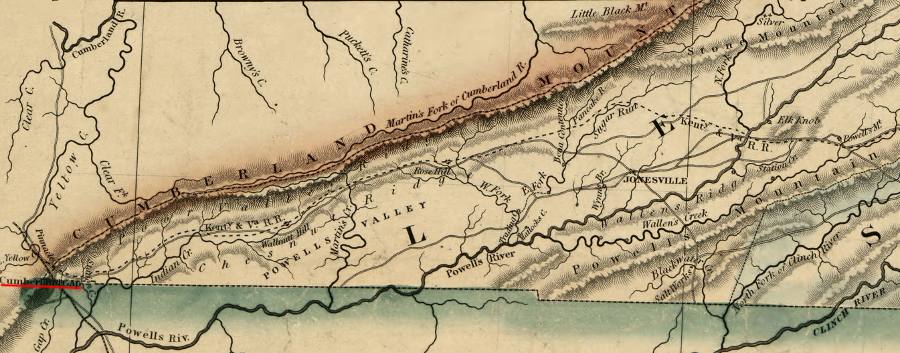
the Wilderness Road crossed the Appalachian Front into Kentucky via Cumberland Gap
Source: Library of Congress, A map of the state of Virginia, constructed in conformity to law from the late surveys authorized by the legislature and other original and authentic documents (1859)
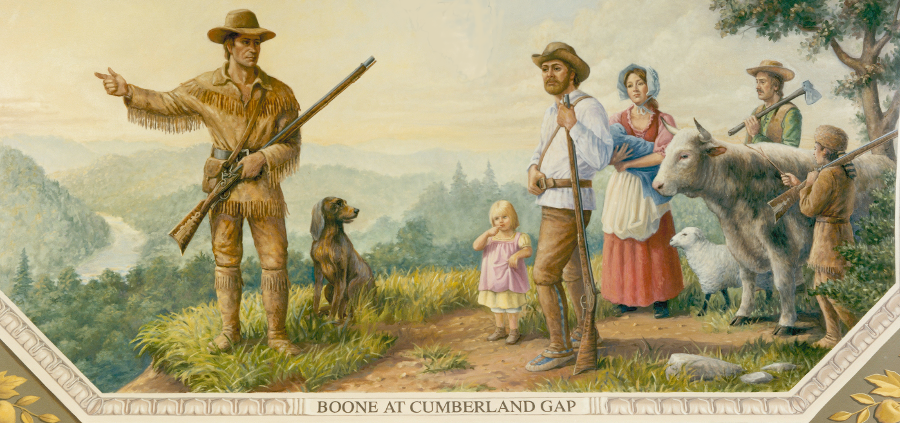
in 1775, the land speculators of the Transylvania Company paid Daniel Boone to blaze a path westward from Cumberland Gap into Kentucky's Bluegrass Region
Source: Architect of the Capitol, Boone at Cumberland Gap
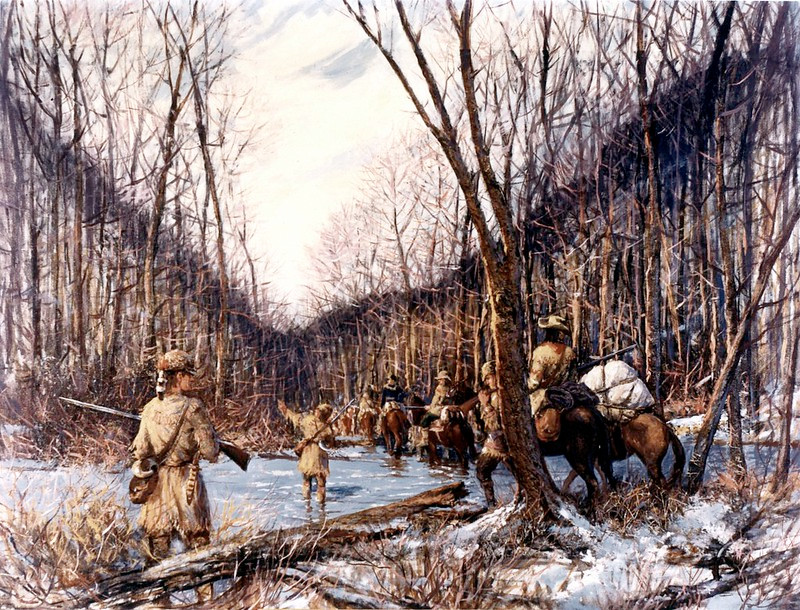
the Wildernes Road, cut through Cumberland Gap in 1774, was an extension of the Great Wagon Road through the Shenandoah Valley
Source: Federal Highway Administration, 1774 The Wilderness Road (painting by Carl Rakeman)
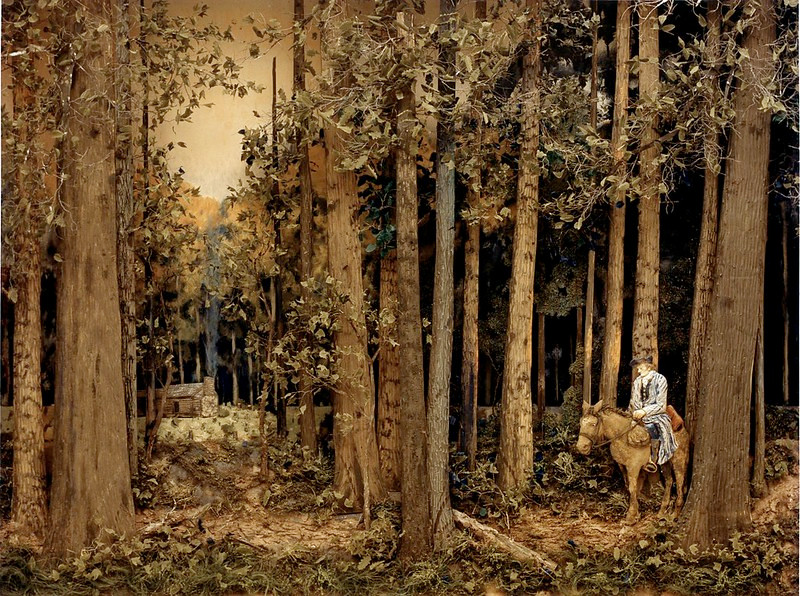
the Wilderness Road was just an improved trail, when first cut by Daniel Boone through Cumberland Gap
Source: Federal Highway Administration, 1809 The Natchez Trace (painting by Carl Rakeman)
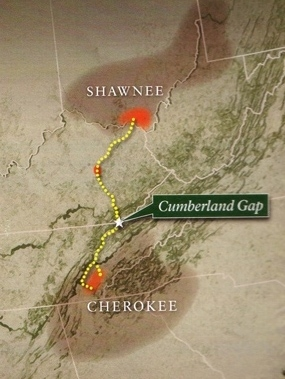
the Cherokee and Shawnee used a game trail to cross through Cumberland Gap for both hunting and fighting in the 1700's, creating what colonial settlers called the Warrior's Path
Source: National Park Service, Cumberland Gap National Historical Park, Warriors' Path